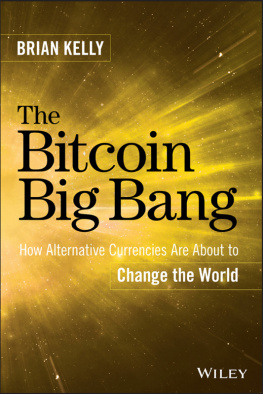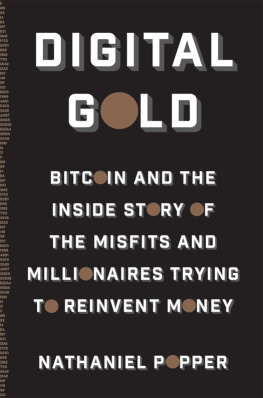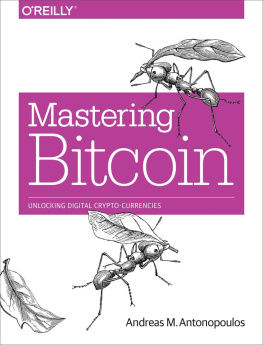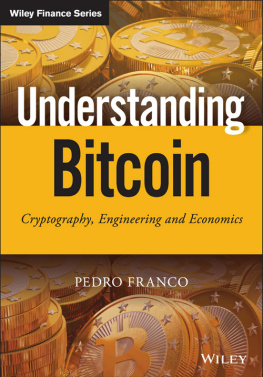


Copyright 2013 by by James Cox
www.lfb.org
ISBN: 978-1-62129-095-7
Cover art: Mena Fusco
Published under the Creative Commons Attribution License 3.0.
http://creativecommons.org/licenses/by/3.0/

Contents
Preface
THE REASON you are reading this book is that you have some misgivings about our current financial system and are intrigued about Bitcoin.
Moreover, you almost certainly also have a lurking doubt that somehow there is something wrong with your relationship with money. You recognize that money has somehow become your master, taking more of your time than you wish to give.
The contents of this book will come as a bit of a surprise to most people, for we do indeed stand on the verge of the most spectacular event in human history. The end of the greatest Ponzi scheme known to man is about to take place.
However, it is important to be positive about the matter. Everything has an equal and opposite effect. For those who are properly prepared, this will be the greatest wealth transfer in history.
However, psychologists are clear that people only change because of pain or insight. Sadly, most people only change because their situation becomes unbearable and therefore most people will be wiped out in the great transfer.
For the lucky few, those who change because of insight, incredible fortunes will be made, provided they have the intellectual courage to act. In order to have the courage to act, people need to be convinced not only of the likelihood of an event happening, but also of it being of serious enough consequence that a change of behavior is worthwhile.
We all are convinced by different means and methods. A few of us are convinced by deductive reasoning logical discussion. Most people however, are convinced by inductive reasoning proof by example. Therefore, in this book we shall give a description of how a given system works and then predict its outcome. We shall then give similar examples of similar events taking place.
With Thanks
THIS BOOK would not have been possible without the love and support of my mother, my brother, and my father may he rest in peace. I should also like to thank my great many wonderful friends.
I owe an intellectual debt to the Austrian school of economics and must pay homage to the greats: Hayek, Mises, and Rothbard. There have also been a few characters whose work actually changed my life; these include James Turk, Chris Martenson, Jim Rogers, and Robert Kiyosaki. But there have been many authors and thinkers who also deserve credit for bringing the simple light of plain logic and common sense to the smoke-and-mirrors world of finance and economics. These include Jesus Huerta de Soto, Joe Salerno, Eric Sprott, John Embry, Ben Davies, Ferdinand Lips, Pater Tenebrarum, James Dines, Kyle Bass, Dr. Van K. Tharp, Buckminster Fuller, Mike Maloney, David Morgan, and Peter Schiff.
Others have simply educated and inspired: Richard Branson, Robert Wright, Dirk Straun, Tim Ferriss, Mark Zubrin, Jeffrey Tucker, and Elon Musk. On the subject of Bitcoin in particular, the list is small yet growing: Max Keiser, Erik Voorhees, Trace Mayer, Michael Suede, and Flix Moreno de la Cova.
Others have given me the most precious gifts possible: their time and wisdom. These include Alasdair McLeod, Ned Naylor Leyland, Dr. Edwin Vieira, Gregor Gregersen, and Gonzague Gay-Bouchery. Again, Trace Mayer must stand out as one of the foremost thinkers concerning Bitcoin within the context of monetary science.
Introduction
MONEY is something that underpins a huge part of our lives, yet few people really understand what it is. Most of us spend eight to twelve hours a day trying to earn money and thinking a great deal, trying to decide how much of our earnings to spend or invest.
However, very few people are willing to spend a little time reading a book to learn about what money is. A strange disconnect exists. We need to cover a few key concepts having to do with what money is, and a little monetary history, before we get started on Bitcoin.
In learning about Bitcoin we reach the understanding that this will be a profound change in the way we view money.
In short, traditionally there have been two types of money, one based on a hard commodity such as gold and one based on a promise, such as a euro. Now there appears to be a third type of money, based on mathematics.
The nature of the money we use dictates the way in which we behave toward the planet and each other. We believe that Bitcoin and digital currencies will have an extremely positive effect for almost everyone.
In the later chapters we discuss the fact that the tiny minority who benefit from the current debt-based monetary system will do their best to defeat Bitcoin. We also analyze their ability to destroy this liberating force.
We hope you find this book enlightening, alarming, and liberating.
Chapter 1
What Is Money?
Debt and Credit, Hard and Soft Money, and Power
BEFORE WE GET STARTED on Bitcoin, we need to have a brief outline on what money is and how it has evolved over time.
Key Concept #1:
Debtors and Creditors
The first key concept is the relationship between the debtor and the creditor. The debtor is someone who wants something a good or a service and the creditor is the person who needs to decide whether or not to give it. The word creditor is based on the Latin word credo, which means I believe. The creditor needs to believe in whatever the debtor is willing to pay and therefore the debtor needs the confidence and trust of the creditor. Equally, the creditor needs be realistic about what the debtor is able to return. The two sides have a mutually binding relationship.
The debtor/creditor relationship is the basis of human collaboration and a key reason why the human race has advanced so far.
Key Concept #2:
What Is Money?
Money is a quantifiable unit of debt/credit. What is good money depends on whether you are a debtor or a creditor. A creditor prefers hard money a tangible commodity object such as a pound of iron or a sheep. A debtor is most happy with soft money an intangible asset such as a promise of favor at some undisclosed point in the future.
Much of what we are going to learn about is the historical battle between debtors and creditors and the concept of money bouncing between hard and soft units of account.
Key Concept #3:
Power
The third key concept is the question What is power? and this is in itself a fascinating question. Power is the ability to influence other people. The main source of power is the ability to communicate
Next page

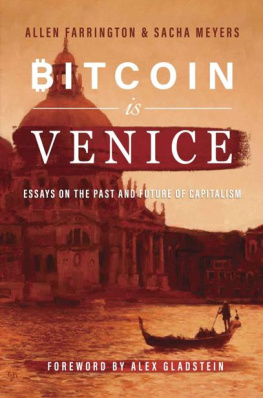
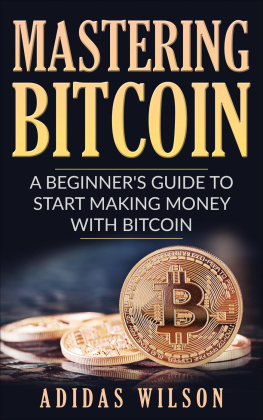
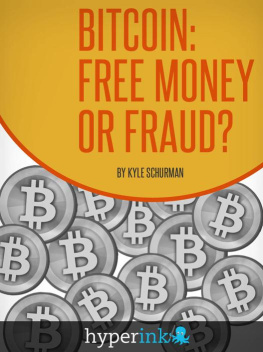

![Brian Kelly [Brian Kelly] - The Bitcoin Big Bang: How Alternative Currencies Are About to Change the World](/uploads/posts/book/119681/thumbs/brian-kelly-brian-kelly-the-bitcoin-big-bang.jpg)
